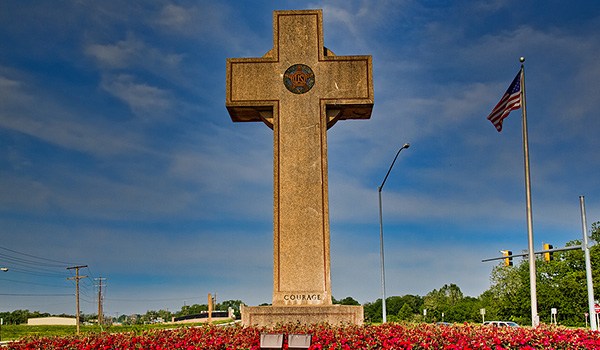By: Jeremy Dys – wsj.com – October 11, 2018
As a lowly corporal, Milton Edward Hartman’s death shouldn’t have drawn much attention. But on a summer day in 1919, it seemed as if half the town of Forestville, Md., came to his memorial service. His commanding officer attended, as did the bishop of Washington. As the Churchman periodical reported on July 19, 1919: “The whole countryside came to the memorial service, thronged the church and filled the churchyard ten feet deep around the church, listening and participating through the open doors and windows.”
Yet Cpl. Hartman’s body wasn’t there. He was killed in France on Oct. 10, 1918. Like too many U.S. Army infantrymen who fell in World War I, he was buried in an American cemetery on European soil. Military records indicate that Hartman was buried with his dentification tags, one of which was attached to the cross-shaped marker hovering over his grave. Most men killed in the Great War were buried this way.Today few remember the names of men who made the ultimate sacrifice. Their mothers knew that people often forget what they do not see. With that in mind, Gold Star mothers from Prince George’s County, Md., sought to preserve some of these names. In 1919 they embarked on a mission to construct a concrete and bronze, cross-shaped memorial featuring the names of their sons, including Hartman.In 1925, these mothers and the American Legion dedicated the Bladensburg World War I Veterans Memorial to the memory of these men. Martha Redman, who lost her son William F.Redman in World War I, explained that she considered the memorial to be her son’s “grave stone.”
Yet after years of litigation, a three-judge panel of the Fourth U.S. Circuit Court of Appeals determined this year that this memorial is unlawful. According to the court, the memorial’s cross shape violates the Constitution. Chief Judge Roger Gregory dissented from the decision to deny a review of the case before the full Fourth Circuit. “Nearly a century ago, Maryland citizens, out of deep respect and gratitude, took on the daunting task of erecting a monument to mirror the measure of individual devotion and sacrifice these heroes had so nobly advanced,” he wrote. “The panel majority says their effort violates the Constitution the soldiers fought to defend. I, respectfully, think otherwise.” Judge J. Harvie Wilkinson III also understood the importance of the memorial, writing in his dissent: “The dead cannot speak for themselves. But may the living hear their silence.” Judge Paul V. Niemeyer, also dissenting, wrote that the Fourth Circuit’s decision “offends the monument’s commemoration of those soldiers’ sacrifice. Moreover, it puts at risk hundreds, and perhaps thousands, of similar monuments.”A few miles from Bladensburg is Arlington National Cemetery. Unless the Supreme Court agrees to hear our appeal and overturns the Fourth Circuit’s decision, the Canadian Cross of Sacrifice, the Argonne Cross, and perhaps the Tomb of the Unknowns—itself originally a World War I veterans monument inscribed with language intertwining the poetic and religious—could face desecration and demolition. That’s only at Arlington. Within 40 miles of Bladensburg are similar monuments employing religious symbolism to commemorate lost soldiers. Countless others across the country share a similar design. There’s a reason for that. Judge Niemeyer explained: “The monument’s use of the cross shape mirrors the custom in Europe during World War I.” He also correctly observed that the Fourth Circuit’s decision “will now have the monument removed or destroyed because, as it concludes, its presence on public land amounts to a violation of the Establishment Clause, although no Supreme Court case has ever held that the Establishment Clause prohibits such monuments.” Alvergia Guyton is the niece of John Henry Seaburn, a soldier who joined the segregated U.S. Army when he was 16. He fought with the African-American 372nd Infantry Regiment, 93rd Division of the French army during the war. Reflecting on the prospect that the memorial could be destroyed, she told a reporter, “It’s history, and people can’t see it when they start tearing it down. You’re robbing the next generation.” How might those standing 10 feet deep in the churchyard on that muggy summer day of Cpl. Hartman’s memorial service feel? They understood that veterans memorials are living reminders of service and sacrifice. They would stand with the American Legion and against those who would erase the memory of the 49 fallen servicemen from Prince George’s County.There is no record of any Supreme Court justice attending Cpl. Hartman’s memorial. But today’s high be the last hope for preserving his memorial.
To see this article, click read more.
 Listen Online
Listen Online Watch Online
Watch Online Find a Station in Your Area
Find a Station in Your Area









 Listen Now
Listen Now Watch Online
Watch Online
